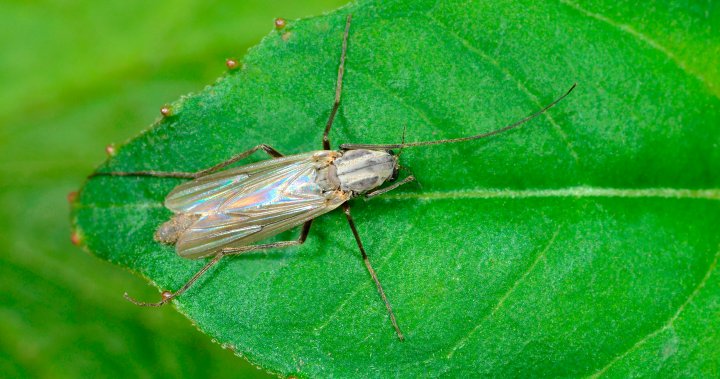As spring arrives in Toronto, those living by the lakeside are familiar with the swarms of midges that come with the warmer weather. These tiny insects serve an important purpose in the ecosystem, starting off as larvae in Lake Ontario and feeding on sediments at the lake bottom. Once they emerge as adults, they fly around in massive swarms, with mostly males until a female arrives for mating. The midges seen in Toronto belong to the non-biting Chironomidae family and have a short lifespan of just a few days to a couple of weeks. They will be seen multiple times over the summer due to the emergence of different species at different times.
Midges are attracted to light, so turning off lights and keeping doors and windows closed or covered with screens can help keep them out of homes. Using zappers is not recommended as it can harm beneficial insects feeding on the midges. It is best to simply wait for the midges to pass as they will eventually return to the water to lay eggs and die off. Despite being a nuisance to humans, midges are an important part of the ecosystem, serving as food for fish and other aquatic animals when in the water, and as bird food when they emerge as flies. With many insect populations declining, midges play a crucial role in the food chain.
The emergence of midges can be expected from April until the end of August, with another swarm possible in September. The bigger emergences typically occur in early May, but this year they may appear even sooner due to environmental factors. Midges need to stay close to the water, so those living further north from the lakeside are less likely to encounter them. In Ontario, there are over 800 species of midges recorded, with only a small number present in Toronto. These species emerge at different times based on temperature and other variables, contributing to the diversity of midges in the province.
Antonia Guidotti, an entomologist with the Royal Ontario Museum, explains that midges play a crucial role in the food chain, serving as essential food sources for various animals both in the water and on land. She emphasizes the importance of midges in maintaining the balance of the ecosystem, especially at a time when insect populations are declining. Despite being a temporary nuisance to residents near the lakeside, midge swarms are a natural phenomenon that is part of the seasonal cycle. Understanding the biology and behavior of midges can help people coexist with these insects and appreciate their role in the environment.
Overall, midges are essential insects that contribute to the biodiversity and functioning of ecosystems, particularly in bodies of water like Lake Ontario. While their swarms may be bothersome to humans, they play a vital role in providing food for fish, birds, and other aquatic animals. By understanding their life cycle and behavior, people can learn to live alongside midges during their seasonal appearances and appreciate the important role they play in sustaining the natural world. Despite their short lifespan, midges are a key component of the food web in Ontario and contribute to the overall health of the ecosystem.















